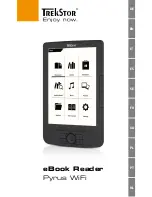
Programming the AY-Dx9M
18
AY-Dx9M Family Installation and Programming Manual
5.3.1.2
Single Key, Wiegand 6-Bit, Nibble & Parities
Each key press immediately sends 4 bits with 2 parity bits added; even
parity for the first 3 bits and odd parity for the last 3 bits.
0 = 0 0000 1 6 = 1 0110 0
1 = 0 0001 0 7 = 1 0111 1
2 = 0 0010 0 8 = 1 1000 1
3 = 0 0011 1 9 = 1 1001 0
4 = 1 0100 1
* = 1 1010 0 = "B" in Hexadecimal
5 = 1 0101 0
# = 1 1011 1 = "C" in Hexadecimal
5.3.1.3
Single Key, Wiegand 8-Bit, Nibbles Complemented
This option inverts the most significant bits in the message leaving the
least 4 significant bits as Binary Coded Decimal (BCD) representation
of the key. The host system receives an 8-bit message.
0 = 11110000 6 = 10010110
1 = 11100001 7 = 10000111
2 = 11010010 8 = 01111000
3 = 11000011 9 = 01101001
4 = 10110100 *= 01011010 = "A" in Hexadecimal
5 = 10100101 # = 01001011 = "B" in Hexadecimal
5.3.1.4
4 Keys Facility Code, Wiegand 26-Bit
This option buffers 4 keys and outputs keypad data with a three-digit
Facility code like a standard 26-bit card output.
The Facility code is set in Programming Menu number four and can be
in the range 000 to 255. The factory default setting for the Facility
code is 000 (see Section
5.6).
The keypad PIN code must be 4 digits long and can range between
0000 and 9999. On the fourth key press of the 4-digit PIN code, the
data is sent across the Wiegand data lines as binary data in the same
format as a 26-bit card.
If
*
or
#
is pressed during PIN code entry, the keypad clears the PIN
code entry buffer, generates a beep and is ready to receive a new 4-
digit keypad PIN code.











































